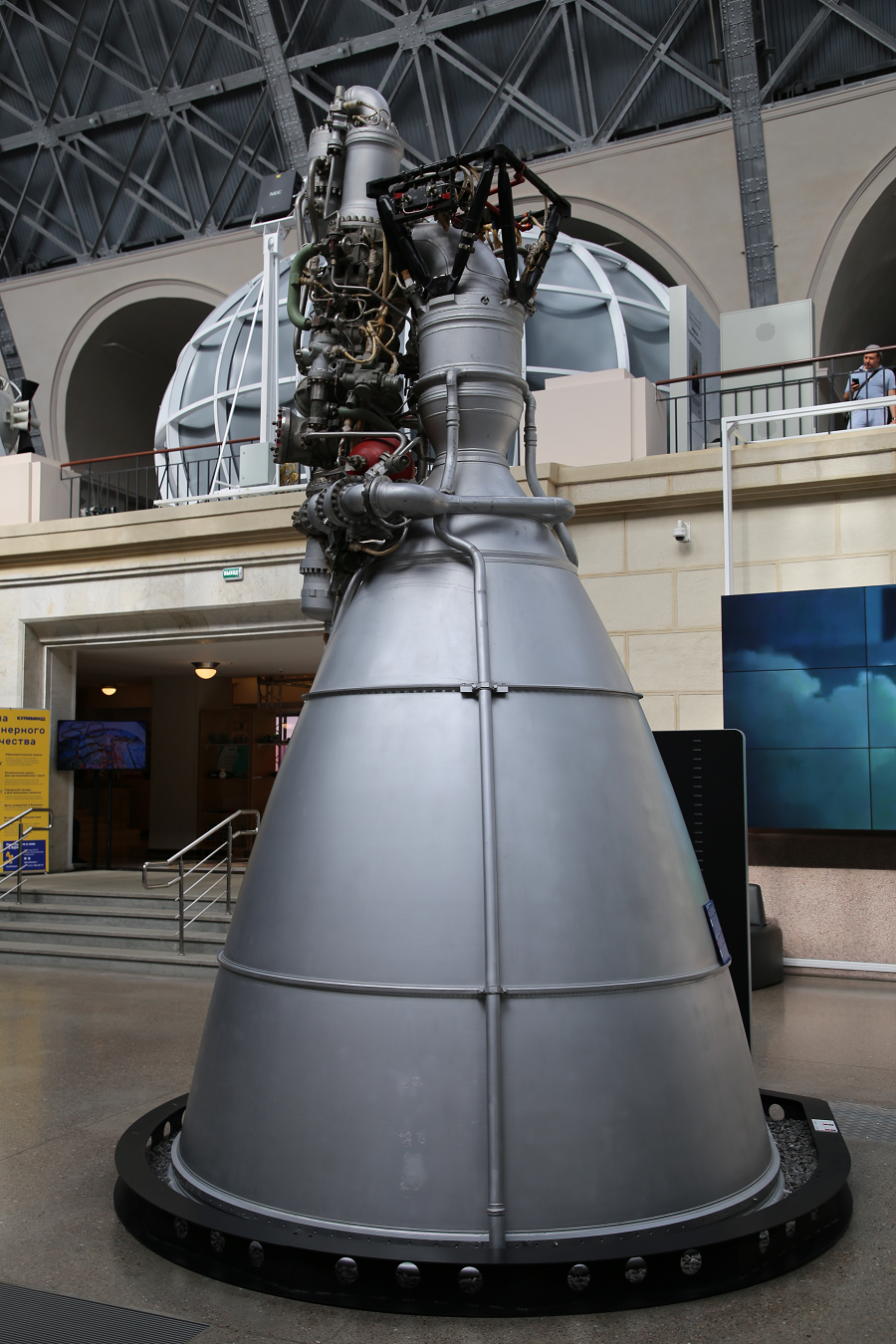Liquid-propellant rocket engine NK-43. Designed by N.Kuznetsov in 1968
The NK-33 and NK-43 are rocket engines designed and built in the late 1960s and early 1970s by the Kuznetsov Design Bureau. The NK designation is derived from the initials of chief designer Nikolay Kuznetsov. The NK-33 was among the most powerful LOX/RP-1 rocket engines when it was built, with a high specific impulse and low structural mass.
They were intended for the ill-fated Soviet N1F moon rocket, which was an upgraded version of the N1. The NK-33A rocket engine is now used on the first stage of the Soyuz-2-1v launch vehicle. When the supply of the NK-33 engines are exhausted, Russia will supply the new RD-193 rocket engine.
It used to be the first stage engines of the Antares 100 rocket series, although those engines are rebranded the AJ-26 and the newer Antares 200 and Antares 200+ rocket series uses the RD-181 for the first stage engines, which is a modified RD-191, but shares some properties like a single combustion chamber unlike the two combustion chambers used in the RD-180 of the Atlas V and the four combustion chambers used in the RD-170 of the Energia and Zenit rocket families, and the RD-107, RD-108, RD-117, and RD-118 rocket engines used on all of the variants of the Soyuz rocket.
The NK-33 engine has among the highest thrust-to-weight ratio of any Earth-launchable rocket engine; only the NPO Energomash RD-253 and SpaceX Merlin 1D engines achieve a higher ratio. The specific impulse of the NK-33 is significantly higher than both of these engines. The NK-43 is similar to the NK-33, but is designed for an upper stage, not a first stage. It has a longer nozzle, optimized for operation at altitude, where there is little to no ambient air pressure. This gives it a higher thrust and specific impulse, but makes it longer and heavier. It has a thrust-to-weight ratio of about 120:1.[
Designer: Kuznetsov Design Bureau
Manufacturer: JSC Kuznetsov











